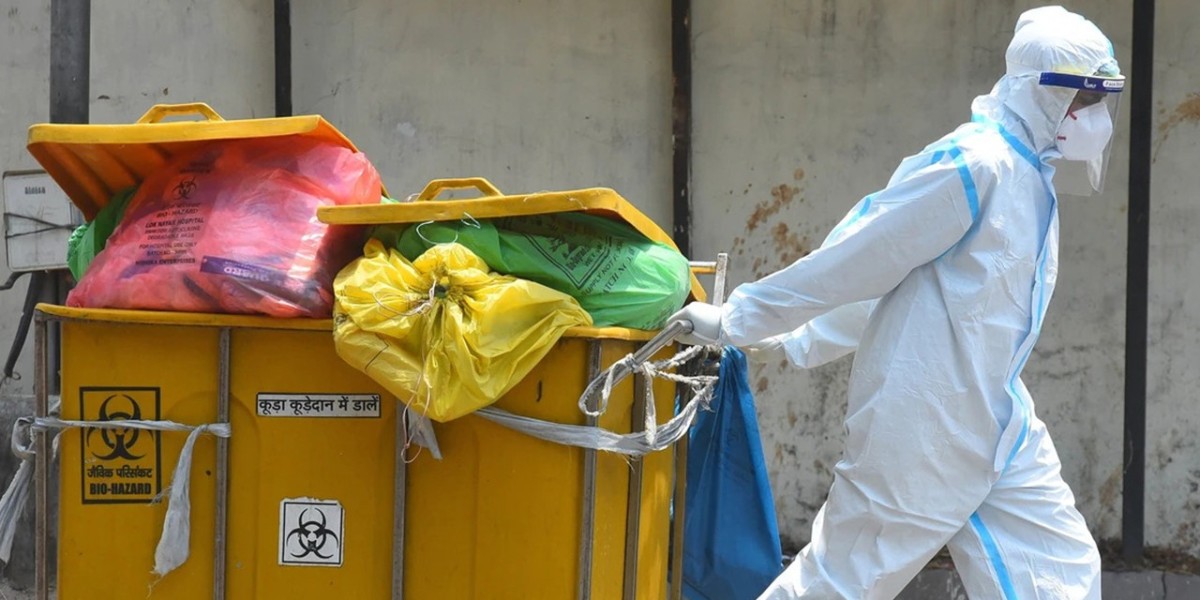Medical facilities, including hospitals, clinics, and laboratories, generate a significant amount of biohazardous waste daily. This waste poses potential risks to healthcare workers, patients, and the broader community if not managed properly. Biohazard waste regulations play a crucial role in ensuring that infectious and potentially harmful materials are handled, treated, and disposed of in ways that minimize health and environmental risks.
This guide outlines the key aspects of biohazard waste regulations that medical facilities must follow to ensure safety and compliance.
What is Biohazardous Waste?
Biohazardous waste, also known as infectious or biomedical waste, includes any waste that contains infectious agents or materials that pose a risk of transmitting diseases. Common examples of biohazardous waste in medical facilities include:
- Used syringes and needles (sharps)
- Contaminated dressings, bandages, and gloves
- Blood, body fluids, and blood-soaked materials
- Laboratory specimens, cultures, and related equipment
- Pathological waste, including human tissues and organs
Biohazard waste regulations are designed to prevent exposure to these materials, reducing the potential for infections, injuries, and contamination of the environment.
Key Biohazard Waste Regulations
Biohazard waste regulations vary depending on local, regional, or national laws, but they all share similar principles to ensure proper management of hazardous materials. These regulations typically cover the full lifecycle of biohazardous waste, from generation to disposal.
Here are the key aspects of these regulations that medical facilities must adhere to:
1. Waste Segregation
One of the most important steps in biohazard waste management is segregation. Medical facilities must separate biohazardous waste from general waste at the point of generation. This helps ensure that infectious materials are treated separately and handled with the proper precautions. Waste must be placed in designated, labeled containers to prevent accidental exposure or contamination.
- Red bags are typically used for infectious waste, such as contaminated gloves and dressings.
- Sharps containers are used for needles, scalpels, and other sharp objects that could puncture skin or packaging.
2. Proper Labeling and Packaging
Regulations require that all biohazardous waste be clearly labeled and properly packaged to prevent leaks, spills, or exposure during handling and transportation. Containers must display a biohazard symbol and include information about the type of waste and the facility where it was generated.
Packaging must be leak-proof, puncture-resistant, and able to withstand handling without tearing or breaking. Sharps containers, for example, must be rigid and sealed to prevent injury to those handling the waste.
3. Storage Requirements
Biohazard waste regulations dictate how medical facilities should store biohazardous materials before disposal. Waste must be stored in a secure, clearly labeled area that is inaccessible to unauthorized personnel. Additionally, waste should not be stored for an extended period to prevent the risk of contamination, pests, or exposure.
Regulations often specify temperature controls for certain types of waste, particularly if biological specimens or tissues are involved. Ensuring that storage areas are clean and well-maintained is essential to complying with regulations and preventing accidental exposure.
4. Transportation and Disposal
Once biohazardous waste has been properly segregated, labeled, and stored, it must be transported to a licensed facility for treatment and disposal. Medical facilities are required to use authorized waste disposal companies that specialize in handling biohazardous materials.
Disposal methods typically involve sterilization, incineration, or other methods of rendering waste non-infectious. For example, autoclaving, which uses high-pressure steam, is a common method for decontaminating biohazardous waste before disposal. Incineration is often used for certain types of waste, such as pathological materials and sharps.
Transporters and disposal facilities must comply with regulatory requirements, including proper documentation and reporting. Medical facilities are responsible for ensuring that their waste is handled and disposed of in compliance with these regulations.
5. Record Keeping and Reporting
Biohazard waste regulations require that medical facilities maintain detailed records of their waste management practices. This includes tracking the amount of waste generated, the type of waste, how it was stored and transported, and the final disposal method. Facilities must retain these records for a specified period, typically several years, to demonstrate compliance with regulations.
In the event of an inspection or audit, these records provide evidence that the facility is following biohazard waste regulations. Failure to maintain proper documentation can result in fines, legal action, or other penalties.
6. Employee Training and Safety Protocols
Compliance with biohazard waste regulations also involves ensuring that healthcare workers and other personnel are properly trained in handling hazardous materials. Employees must understand how to segregate, label, store, and dispose of biohazardous waste safely. Regular training sessions are essential to keep staff updated on the latest regulations and best practices.
Additionally, workers should be equipped with personal protective equipment (PPE) such as gloves, masks, and gowns to reduce the risk of exposure to biohazardous materials. Medical facilities should also have emergency response protocols in place for dealing with spills, leaks, or accidental exposure.
The Importance of Compliance with Biohazard Waste Regulations
Adhering to biohazard waste regulations is not just a legal obligation for medical facilities; it’s a critical responsibility that directly impacts public health and the environment. Non-compliance can result in severe consequences, including:
- Health risks: Improper disposal of biohazardous waste can lead to the spread of infectious diseases and increase the risk of injury or exposure for healthcare workers, waste handlers, and the general public.
- Environmental damage: Biohazardous waste that is not properly treated can contaminate air, water, and soil, harming ecosystems and wildlife.
- Legal penalties: Violations of biohazard waste regulations can result in significant fines, lawsuits, and damage to the facility’s reputation.
By following the appropriate biohazard waste regulations, medical facilities can ensure that they are protecting both human health and the environment, while also maintaining regulatory compliance.
Biohazard waste regulations are essential for ensuring the safe and responsible handling of infectious and dangerous materials in medical facilities. From waste segregation and labeling to disposal and employee training, these regulations help protect healthcare workers, patients, and the community from the potential risks associated with biohazardous waste. By adhering to these guidelines, medical facilities can maintain compliance while contributing to a safer, healthier environment for everyone.







